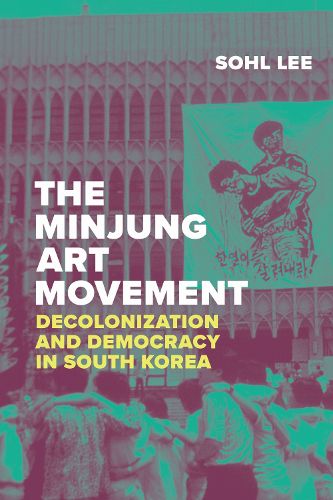Readings Newsletter
Become a Readings Member to make your shopping experience even easier.
Sign in or sign up for free!
You’re not far away from qualifying for FREE standard shipping within Australia
You’ve qualified for FREE standard shipping within Australia
The cart is loading…






Emerging as multifaceted cultural activism, the minjung (people's) art movement defined the aesthetics of the pro-democracy movements in the 1970s and 1980s in South Korea. Tracing minjung art's history and legacy, Sohl Lee explores how artists associated with the movement mobilized images, print, and performance to build movement publics and reimagine sovereignty. Hundreds of artists questioned the underlying assumptions of liberal democracies and the art-making practices of the global Cold War. Their decolonial critiques of international modernism were inseparable from reimagining democracy and refiguring the relationship between art and democracy. Recuperating overlooked performance-oriented practices and the protest aesthetics that helped usher in parliamentary democracy in 1987, Lee shows that South Korea's globalization in the 1990s and its rise as cultural soft power in the new millennium cannot be understood apart from a pro-democracy culture that was both political and popular.
$9.00 standard shipping within Australia
FREE standard shipping within Australia for orders over $100.00
Express & International shipping calculated at checkout
Stock availability can be subject to change without notice. We recommend calling the shop or contacting our online team to check availability of low stock items. Please see our Shopping Online page for more details.
Emerging as multifaceted cultural activism, the minjung (people's) art movement defined the aesthetics of the pro-democracy movements in the 1970s and 1980s in South Korea. Tracing minjung art's history and legacy, Sohl Lee explores how artists associated with the movement mobilized images, print, and performance to build movement publics and reimagine sovereignty. Hundreds of artists questioned the underlying assumptions of liberal democracies and the art-making practices of the global Cold War. Their decolonial critiques of international modernism were inseparable from reimagining democracy and refiguring the relationship between art and democracy. Recuperating overlooked performance-oriented practices and the protest aesthetics that helped usher in parliamentary democracy in 1987, Lee shows that South Korea's globalization in the 1990s and its rise as cultural soft power in the new millennium cannot be understood apart from a pro-democracy culture that was both political and popular.